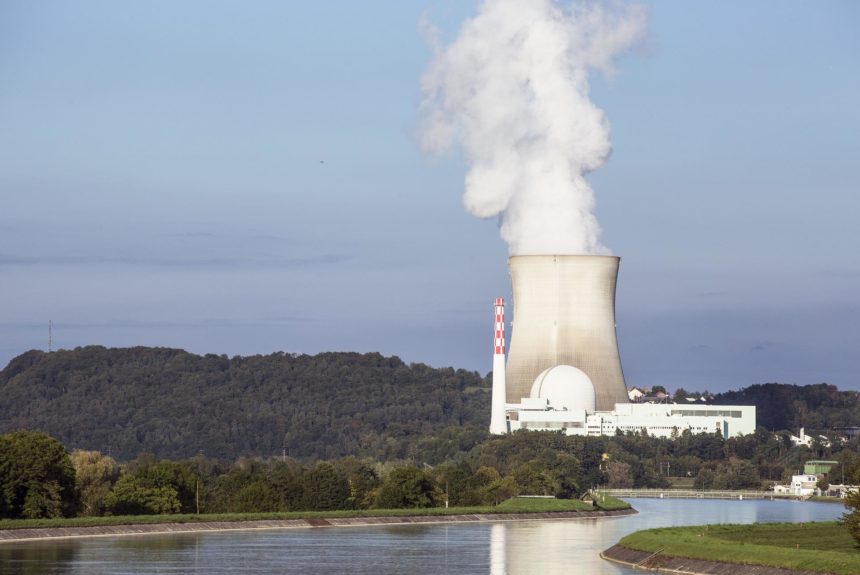This past summer was the hottest on record, according to the National Oceanic and Atmospheric Administration. Expect it to be hot next summer as well, and subsequent summers after that. The future is difficult to predict, but it seems safe to expect more demand for air conditioning, electric cars, electric appliances, and data centers.
Observations bear out those expectations. “After 15 years of relatively flat power demand, projections of electricity use are surging,” the Wall Street Journal reports. “Companies are extending aging fossil-fuel plants to accommodate the expected hike in demand, which is undermining U.S. goals to cut carbon emissions.”
>>>READ: As Banks Pledge Their Support, Fixing Broken Policies Will Make Nuclear More Viable
While natural gas has reduced emissions and energy costs in the U.S., other energy sources can deliver reliable, emissions-free electricity. Increasingly, the private sector and tech companies are turning to nuclear power to meet their power needs and climate goals. The U.S. can boost nuclear power production by modernizing the regulations that have historically held the energy source back. Luckily, lawmakers are taking positive steps.
In June, President Joe Biden signed the Accelerating Deployment of Versatile, Advanced Nuclear for Clean Energy (ADVANCE) Act into law. In a time of closely divided politics, the law earned overwhelming support. It passed 88-2 in the Senate and 393-13 in the House. The ADVANCE Act will modernize regulations, increase international collaboration, and reduce costs for investment in and deployment of nuclear power.
For example, one provision of the ADVANCE Act reduces fees imposed by the Nuclear Regulatory Commission for costs associated with pre-application activities and early site permits at Department of Energy sites or other critical national security infrastructure. This will make it easier for companies to proceed with demonstration projects of first-of-a-kind nuclear technologies at DOE facilities and will allow developers to evaluate new concepts, recognize design inefficiencies, and attract investors.
While a step in the right direction, policymakers could go one step further by shifting all application licensing fees and safety costs to the federal government. The provisions of nuclear safety are a public good and thus the costs should be borne by the taxpayer.
Another vital component of the ADVANCE Act orders the NRC to conduct a report on material standards in the industry. This is an area where far too many resources are squandered. Current procedure requires that steel, rebar, and concrete used to build nuclear power plants must be what is called “nuclear grade.” That sounds impressive, but the reality is that it is merely more expensive.
“Nuclear grade” materials can cost as much as 50 times what conventional materials cost, yet they are often the exact same materials. The difference is the piles of paperwork needed to document that the materials are cleared for use in nuclear plants. Cut the red tape, and you will cut the cost of building nuclear plants, without sacrificing safety.
Another necessary change is in radiation standards. Right now, nuclear power plants are required to reduce radiation to levels that are “as low as reasonably achievable.” Of course, it is always possible to emit less radiation, so this imposes an impossible standard that other sources of energy are not required to meet. Coal plants, for instance, emit more low-level radiation than nuclear plants but their radiation is not regulated.
>>>READ: It’s Time for Congress to Capitalize on Nuclear Power’s Momentum
Compliance with radiation standards increases operational costs and hurts nuclear’s market outlook. Importantly, the cost of these safety measures provide little public benefit. While other life-saving measures, such as vaccines and seatbelts, are estimated to cost $10 for every life they save, civilian nuclear radiation standards are estimated to cost from $1 million to several billion dollars per life saved. That is a poor investment.
The public is often led to believe that nuclear power is inherently dangerous. Any time there is an accident at a nuclear plant, it is widely reported. However, nuclear is one of the safest energy sources available. As analyst Hannah Ritchie writes, “Nuclear energy, for example, results in 99.9% fewer deaths than brown coal; 99.8% fewer than coal; 99.7% fewer than oil; and 97.6% fewer than gas.”
Nuclear can provide the electricity we need without the emissions we don’t want. To capitalize on these benefits and build more nuclear power, the government must make regulations more efficient and easier to navigate. There is no time to waste.
The views and opinions expressed are those of the author’s and do not necessarily reflect the official policy or position of C3.
